1. System Overview: All PV Systems at a Glance
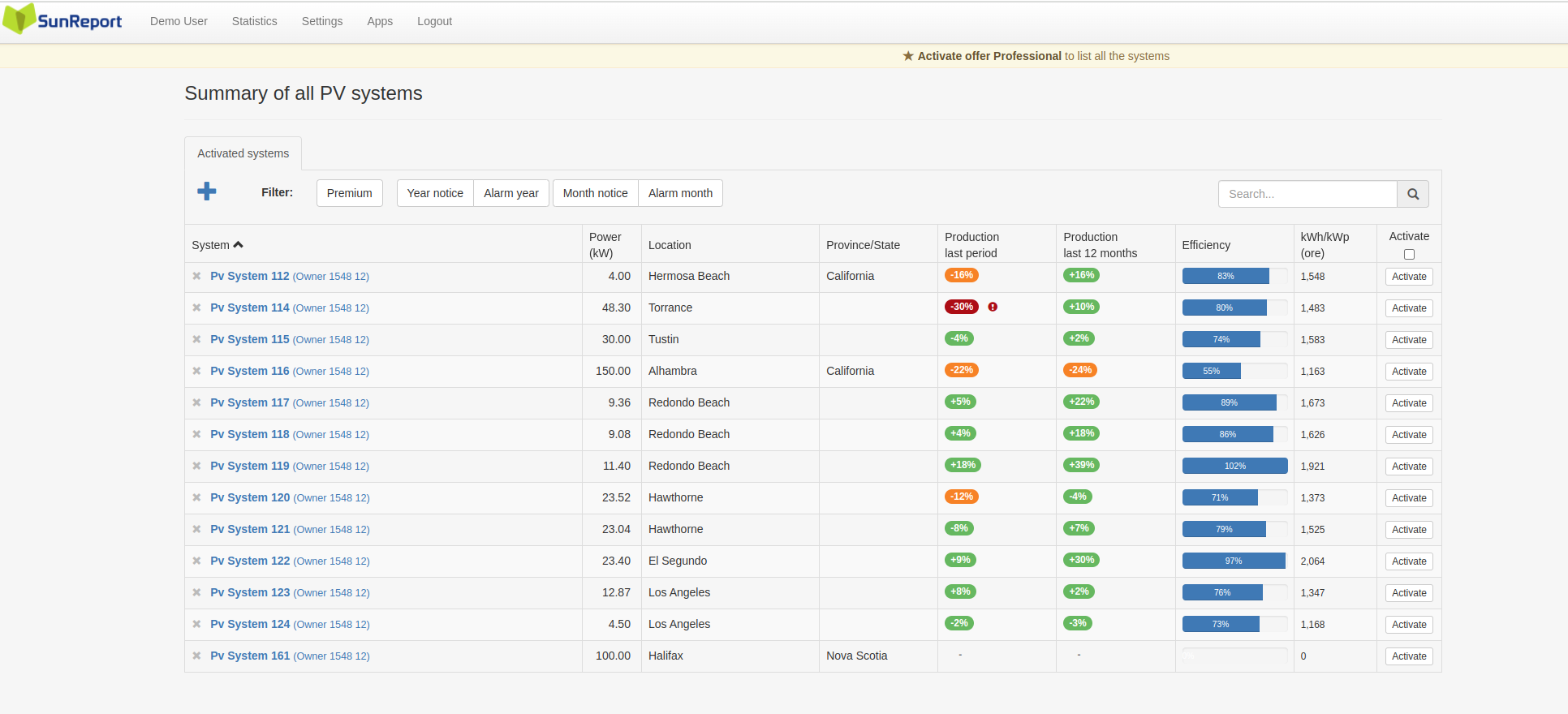
This view aggregates all registered PV systems in a comprehensive table, listing essential information such as power capacity, geographical location, and performance metrics. Each system is monitored in real-time for performance deviations using color-coded indicators. The interface is designed to facilitate management of multiple installations and prioritize systems requiring immediate action.
Metrics like energy production in the last 12 months, current efficiency ratios, and power output are presented. Performance alerts are visually integrated to streamline troubleshooting across multiple sites.
2. System Overview: Key Performance Indicators (KPIs) at a Glance

The System Overview provides a snapshot of the system’s performance metrics, including energy produced, deviations from forecasts, and total energy generated over the last 12 months.
- Deviations Analysis: View deviations for the last week, month, and year to track ongoing system health.
- Performance Status Indicators: Quickly assess the system’s health with visual OK indicators for each time frame.
- Cumulative Production Data: Total energy generated over the past 12 months is prominently displayed, making it easy to communicate value to customers.
3. Efficiency and Performance Analysis: Monitoring Energy Output
Hourly Efficiency Analysis
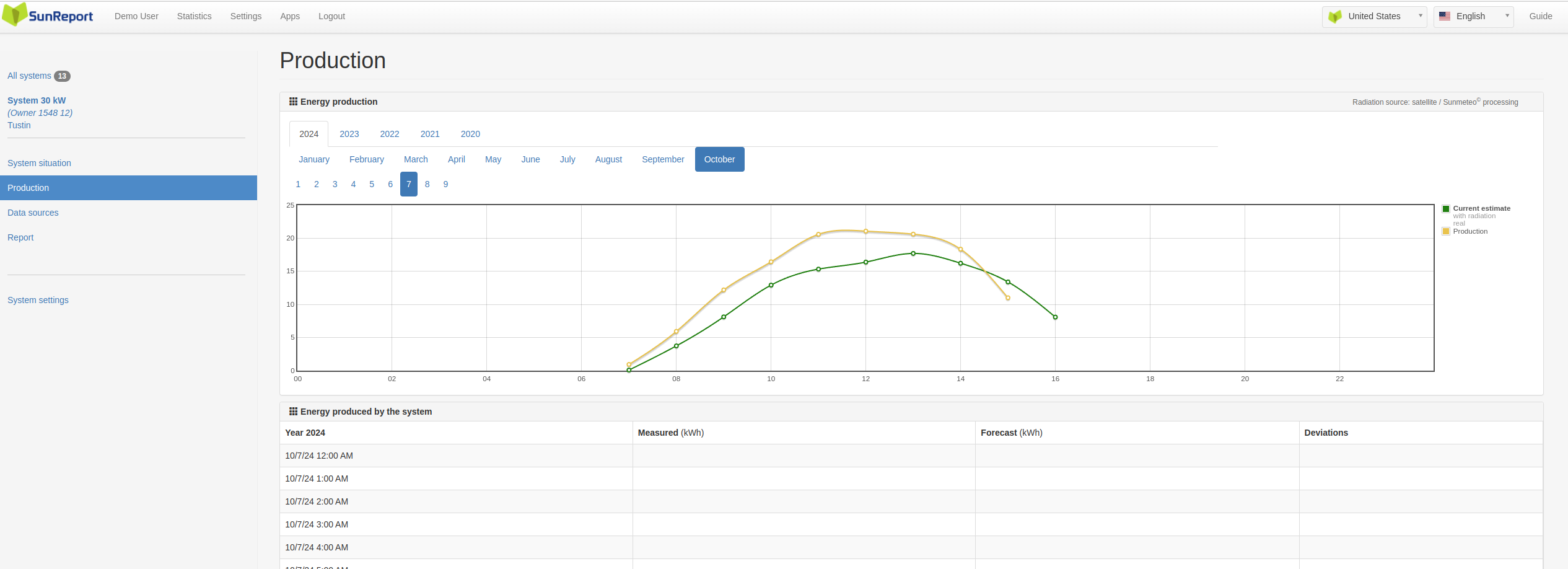
This graph displays efficiency ratios on an hourly basis, allowing detailed tracking of performance variations throughout the day. Detecting suboptimal hourly trends is made straightforward, enabling quicker diagnostics.
Daily Efficiency Trends
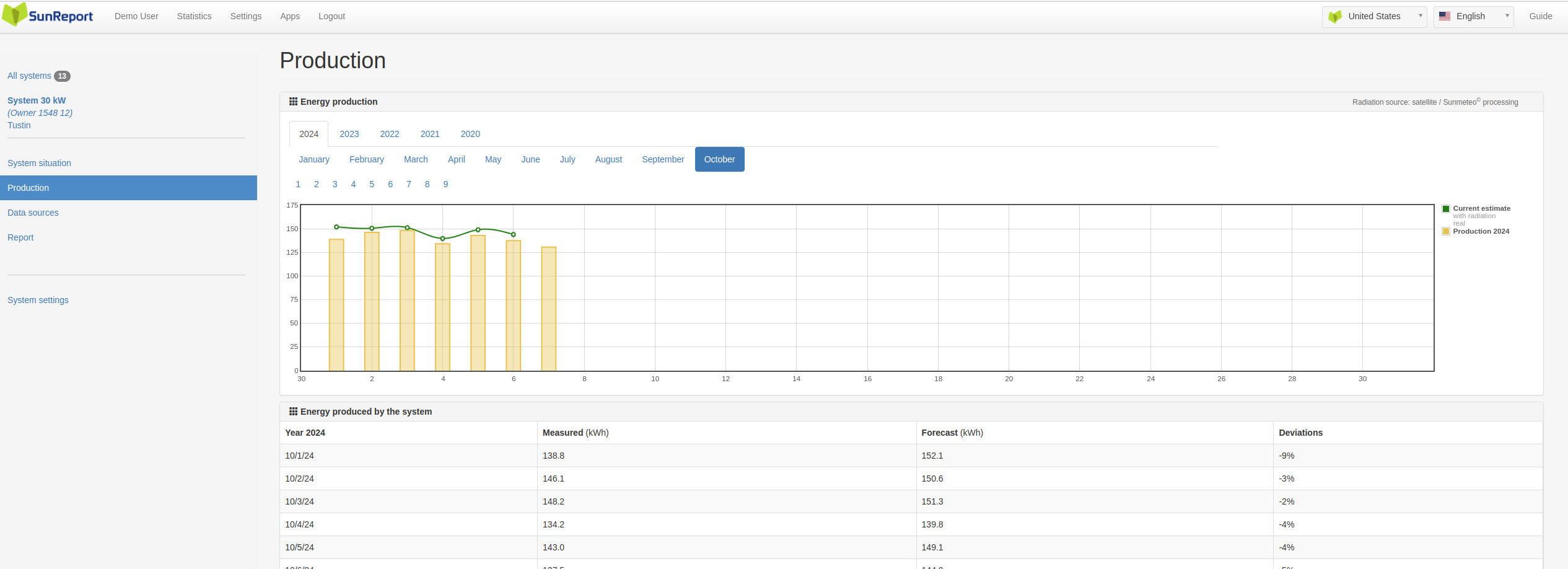
Daily efficiency ratios are recorded and displayed, providing a clear picture of daily production patterns. Deviations from expected performance values are highlighted, aiding in the early detection of any system underperformance.
Monthly Efficiency Tracking
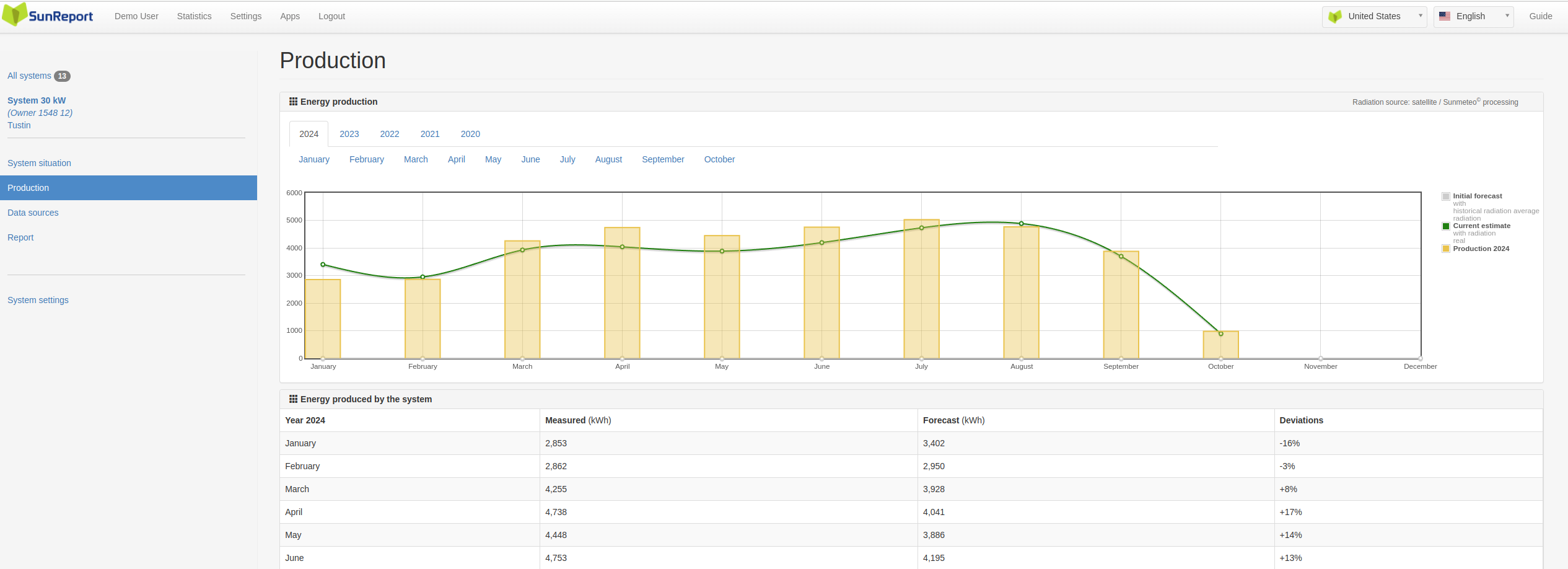
Monthly performance is tracked to identify longer-term trends and seasonal variations. The data provides insights into how external factors like weather and shading affect efficiency. Underperforming months are flagged for further analysis, and data can be exported for comparative analysis.
4. Data Source Integration: System-Agnostic Compatibility
Device Overview
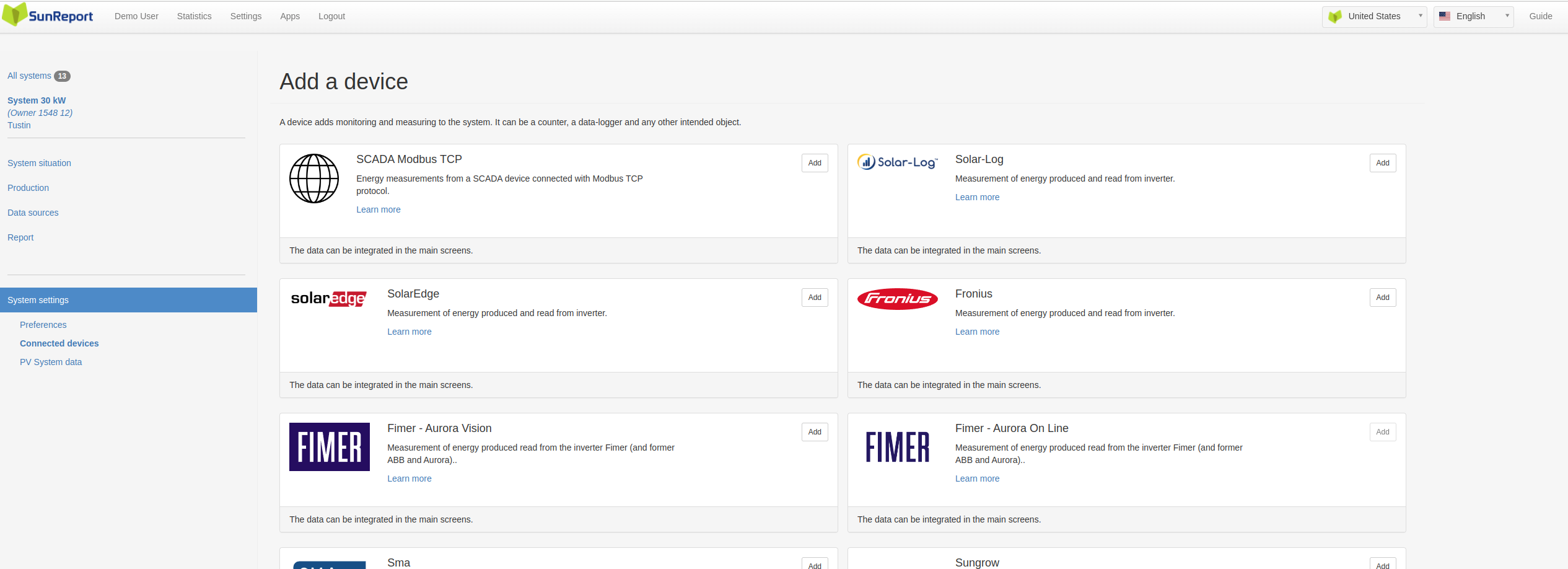
Protocols like SCADA Modbus TCP and proprietary inverter integrations are supported. Data from each device is seamlessly incorporated into the main interface for unified analysis. Major inverter brands like SolarEdge, Fronius, and SMA are included. Integration is facilitated for each device, allowing performance metrics from multiple manufacturers to be monitored in one place.
Active Device Monitoring
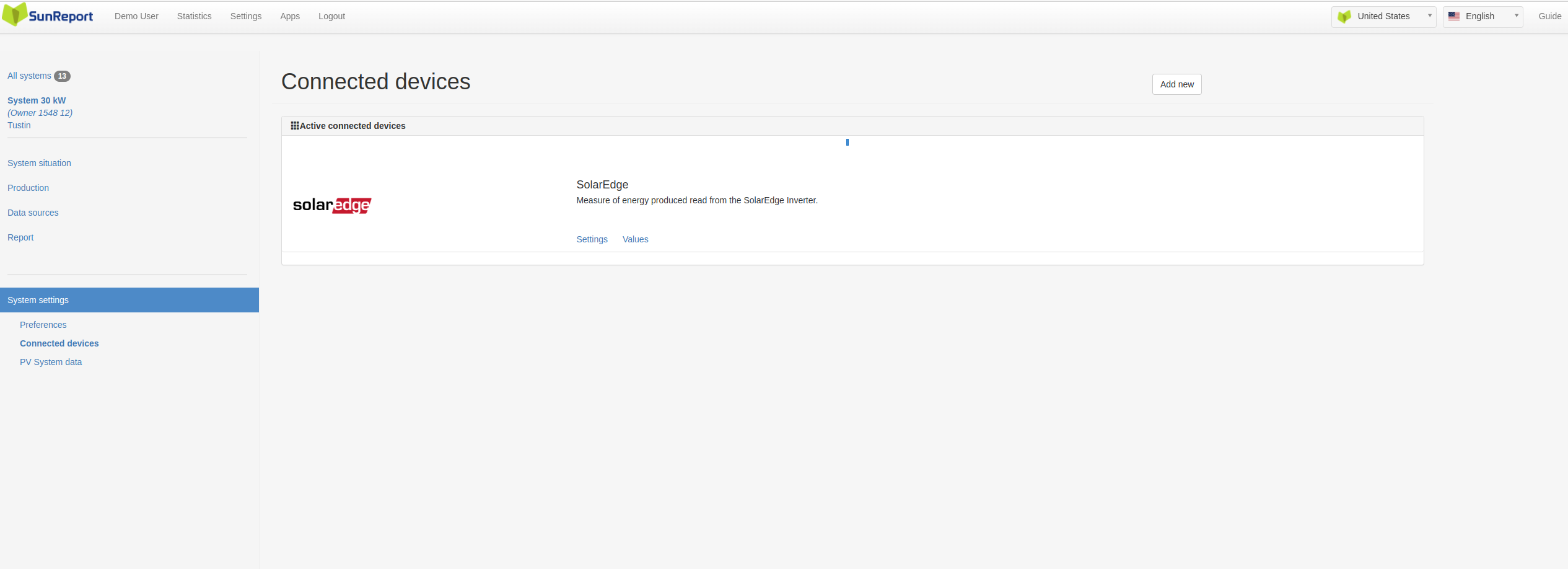
Real-time monitoring of connected devices is enabled. Device settings can be configured as required, and operational parameters are tracked continuously. Data flows directly from the devices into SunReport, ensuring real-time accuracy of the displayed metrics.
5. Production Analysis: Energy Output and Deviation Monitoring
Production Overview
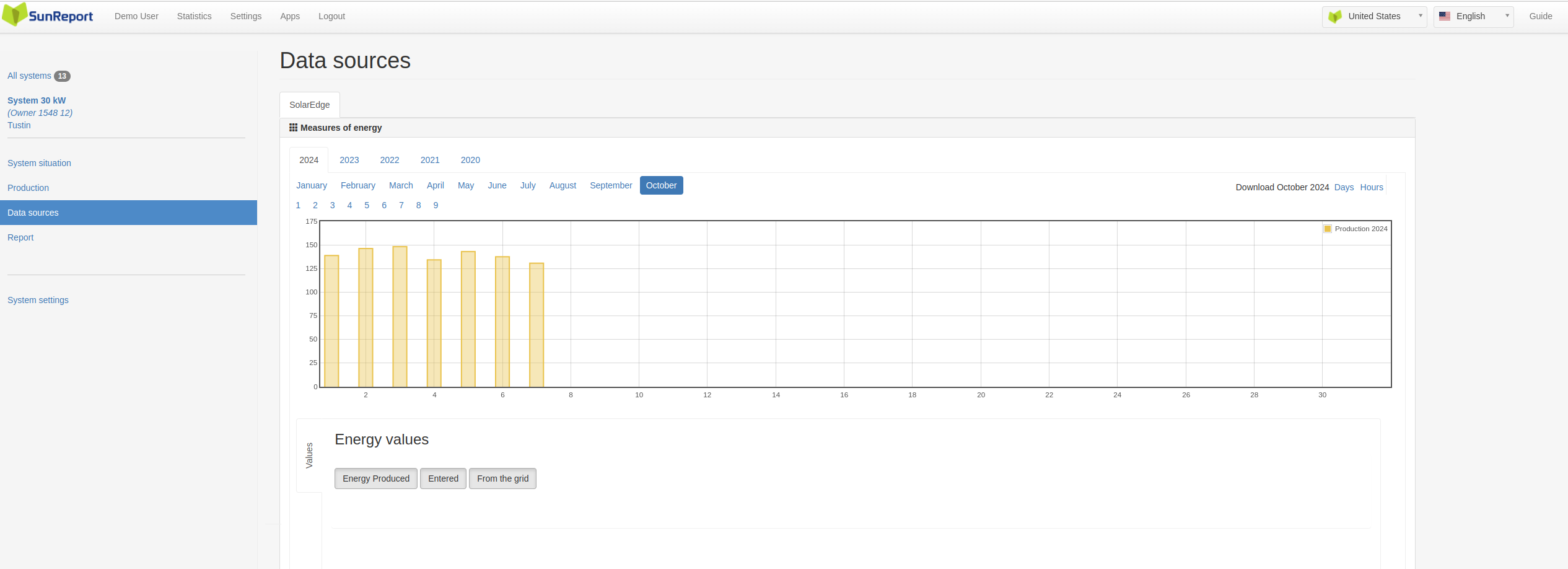
Production trends are tracked daily, monthly, and yearly, comparing actual values against the initial forecast and real-time estimates. Deviations are calculated to indicate the percentage difference between projected and actual production values. This data can be used to identify long-term performance patterns and optimize maintenance schedules.
6. Reporting and Data Export: Comprehensive Report Generation
Report Generation
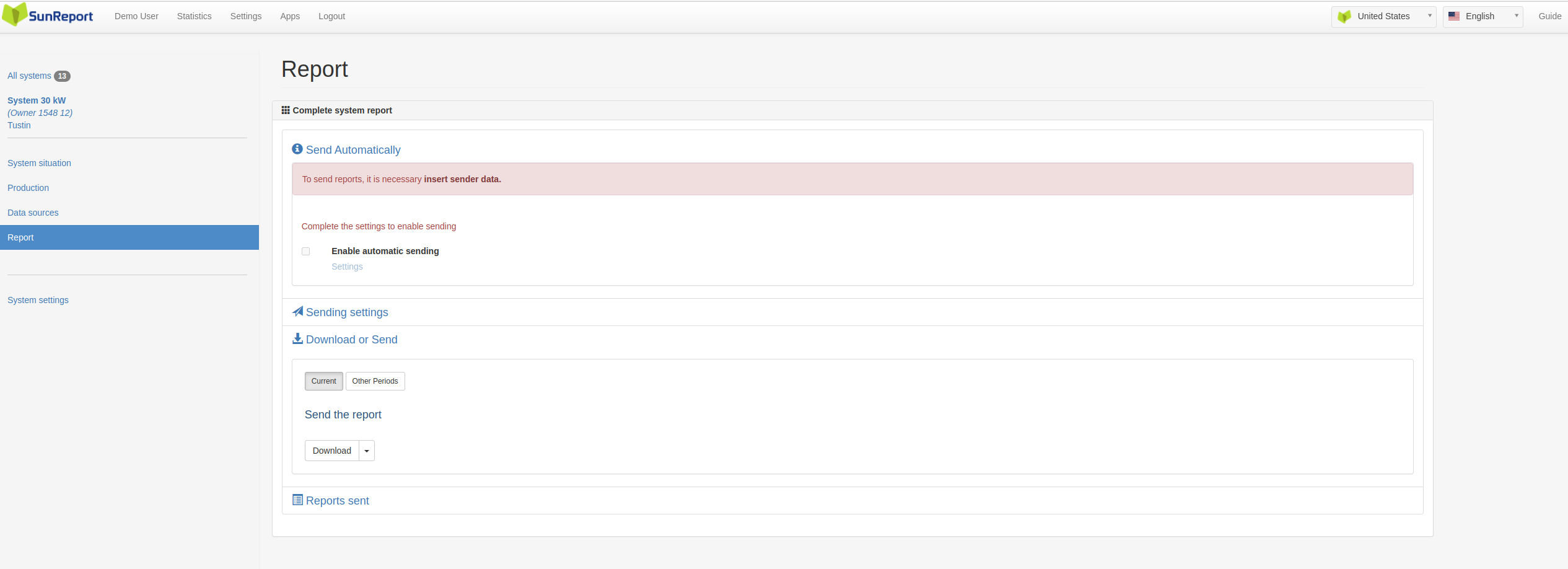
Customizable reports are generated to reflect system performance over selectable time periods. Reports include key data points like energy produced, system efficiency, and performance deviations. Automated sending options are available, ensuring that reports are delivered to stakeholders without manual intervention.
PDF Reports

Reports are formatted for easy sharing, with visual elements highlighting critical performance data. Comparative graphs, efficiency values, and production metrics are included in each report. Download options are provided for detailed offline analysis.
7. System Configuration: Setting Up Accurate Metadata
Configuring System Surfaces
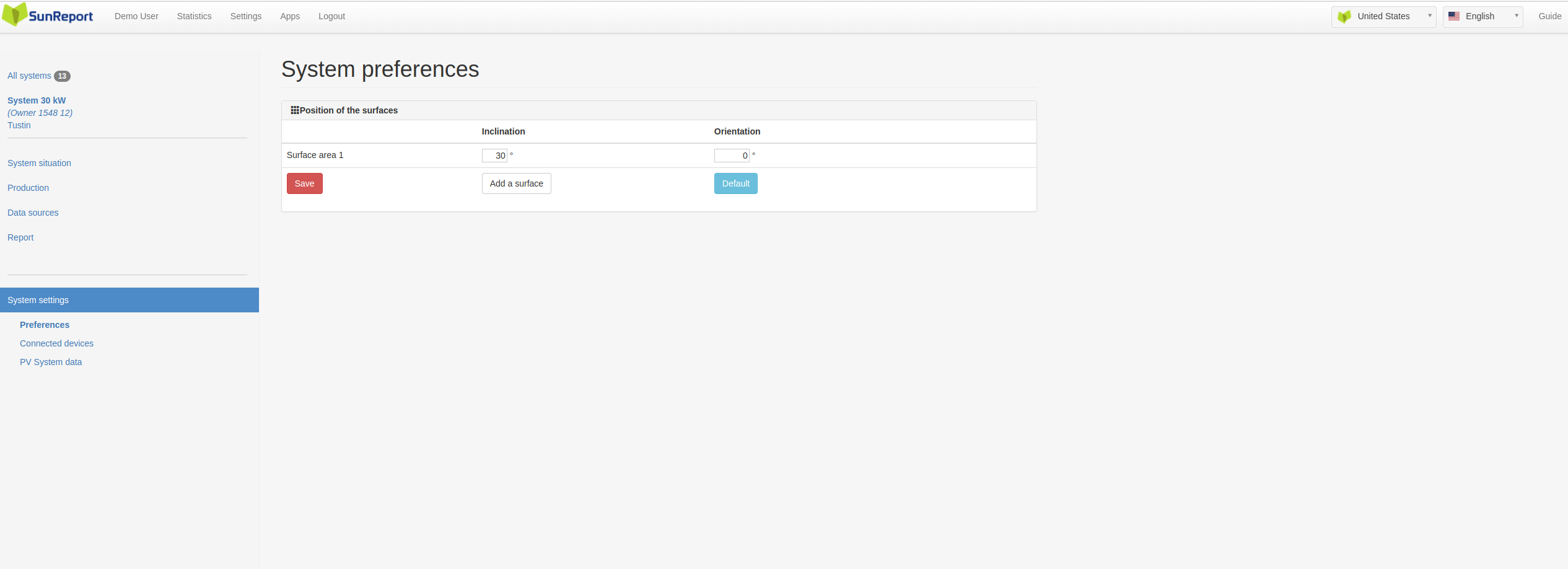
Surface configuration parameters like inclination, orientation, and module setup are defined for each PV system. Accurate metadata is essential for precise performance modeling and forecasting. Changes to these parameters are reflected instantly in all related performance calculations.
Geographical System Data
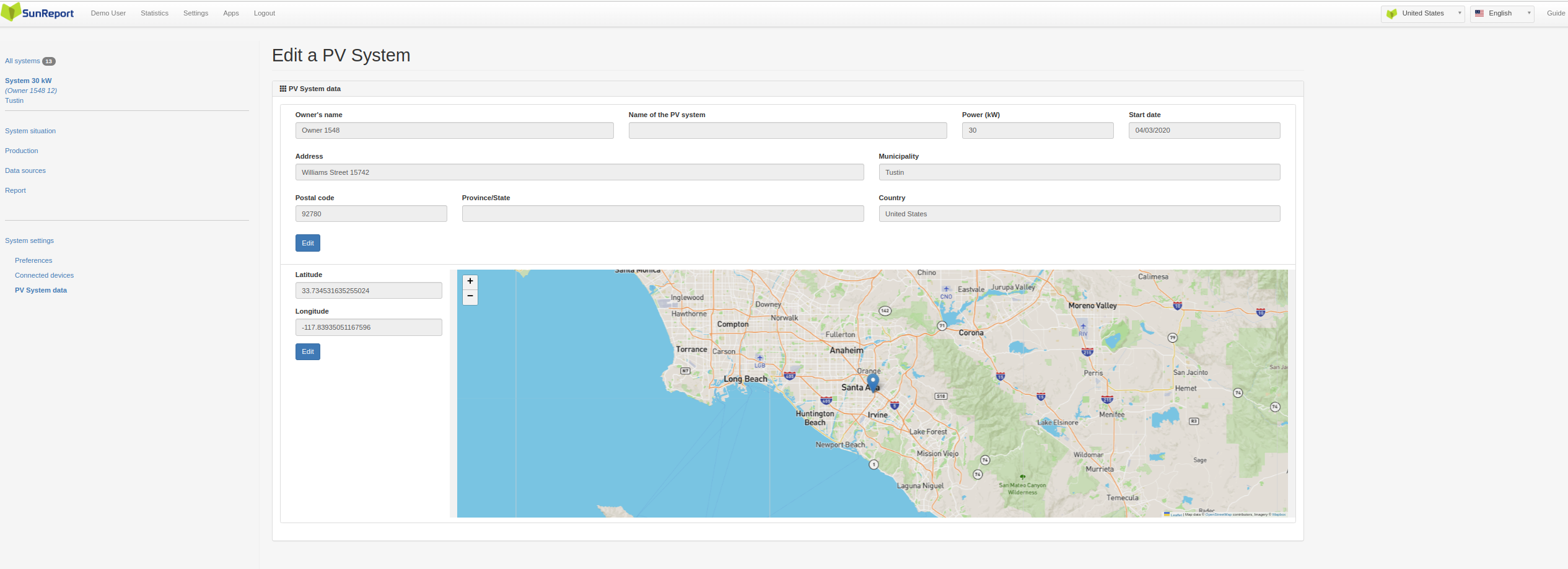
Geographical data, including latitude, longitude, and system power ratings, is configured to ensure accurate system monitoring. Each PV system’s metadata is stored for use in detailed production analysis and historical comparisons.


 Canada - English
Canada - English